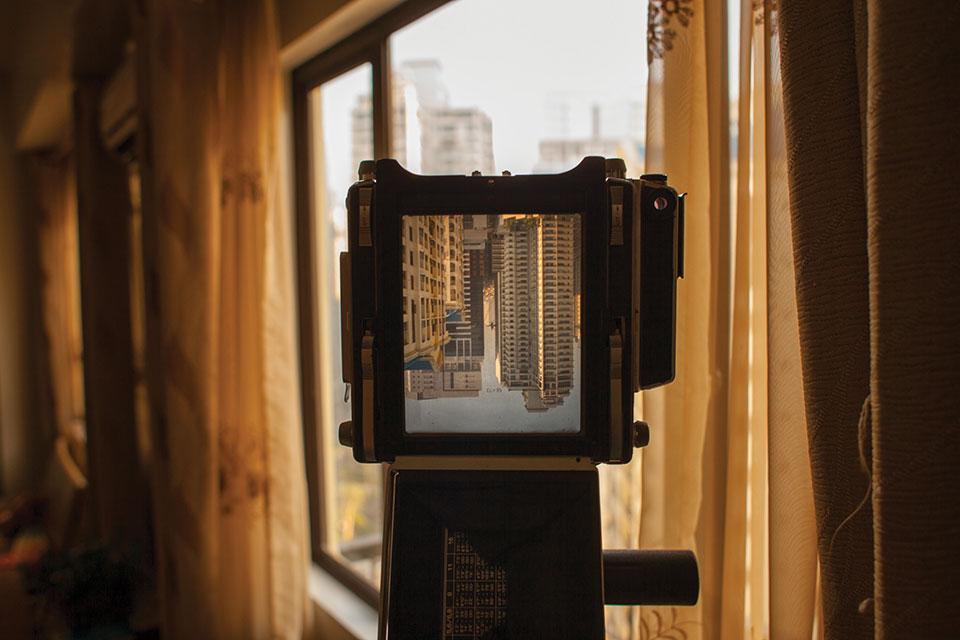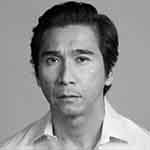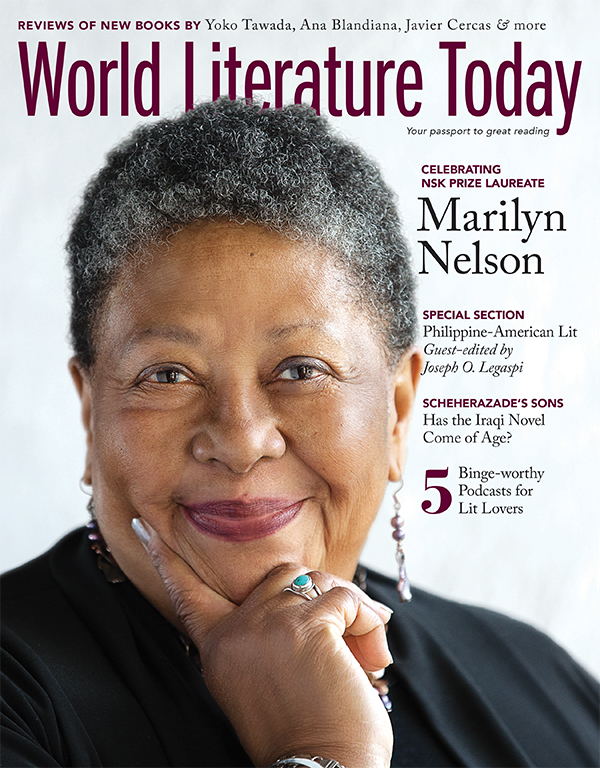Fractured but Whole, Separated but Together

In 2015, while on a Fulbright research fellowship in the Philippines, I went on a walking tour of Intramuros, the famed walled city in Manila. Erected from the ruins of a Malay settlement, Miguel López de Legazpi, a Spanish conquistador, proclaimed Intramuros as the capital in 1571, becoming the center of political, military, and religious life for four hundred years. During World War II the Americans bombed the site into smithereens, with only San Agustin Church left standing. The guided tour was rambunctious, politicized, and entertaining, more of a performance art, really. We stood erect with our right hands on our hearts for the Philippine national anthem. We repeated singsong-y lines fed to us by the flamboyant tour guide: “Little bamboo houses.” There was even a race of sorts among the participants where we rode various modes of public transport, including bicycles, tricycles, and kalesa, or horse-drawn carriages. The spectacle ended with the group eating halo-halo, the popular Philippine dessert made of shaved ice, evaporated milk, sweet beans, jellies, and candied fruits. The tour guide concluded—albeit simplistically—that Philippine culture was like halo-halo, the Tagalog name loosely translated as “mix-mix,” in that Filipinos were a swirling mixture or amalgam of multiple influences and sensibilities. Yes, indeed, to be Filipino is to be multifaceted: to be Spanish, Chinese, Portuguese, Malay, Muslim, Catholic, tribal, indigenous, mestizo. The country itself is an archipelago, consisting of over seven thousand islands, the number, some say, depending on the fluctuation of the tides. These are metaphors for the temperament and psyche of the Philippines. Filipinos are passionate, hospitable, scattered, adaptable, fun-loving, mischievous, friendly, brutal.
Then, let’s throw in a hyphen and “American” to the mix—Filipino-American—and complicate matters further. Simply put: the relationship between the Philippines and the United States is fraught. America, our conqueror and liberator, colonizer and icon, English is now our lingua franca. The Philippines remains its “little brown brother” and its strategic military base in Southeast Asia. Meanwhile, I’m situated as part of the 1.5 generation with one foot on each hemisphere, albeit the spread has grown increasingly distant with the years. I was born and raised in Manila, immigrating with my family to Los Angeles in the throes of the summer Olympics in 1984, when I was twelve. I have retained much of my Tagalog and my memories. The move, a seismic shift, created the landscape for me to become a writer, a poet. In America I developed my consciousness quickly. I was alerted to my otherness, my foreign self in a foreign land. In college, I visited a convalescent home in Delano in the California heartland, where I met the manongs, elder bachelor Filipino migrant workers, binding me to Philippine-American history. It was the subject matter of the first poem I’d ever published:
Each told the story of the collective,
the many eyes of a single pineapple:
I came to America at sixteen, at fourteen,
at twelve aboard a dysenteried ship . . .
Because of American influence and education in the Philippines at the turn of the century, after the Spanish-American War and Philippine-American War, this second wave of immigrants did not see themselves as aliens, but upon arrival the harsh realities set in.
These are metaphors for the temperament and psyche of the Philippines. Filipinos are passionate, hospitable, scattered, adaptable, fun-loving, mischievous, friendly, brutal.
In curating this special portfolio, I was ambitious in procuring works by Filipino writers as well as Filipino-Americans. My hope far exceeded my reach. But thankfully the submitted pieces that emerged observe, explore, articulate, and question the Filipino-American experience. The connection to the motherland is strong, bridging the chasm between those US-born and Filipinos. There is an immense sense of longing, an almost umbilical thread, for the Philippines. There are also interpretations as to how to be a Filipino in America. What does it mean to live in the diaspora? For myself and the writers collected here, much of our identity is marked by a country on the other side of the planet, thirteen or more hours away. When we sleep, they polish through their workday. When they slumber, bone-tired, we dream. How to reach this gap of time and space, which sounds like science fiction? Interplanetary, but as with such genres we try to find our common humanity, this seemingly interspecies love affair. A touchstone of Filipino kinship is dispersal: the ability to feel intimacy between the thousands of scattered islands. Filipinos are also the workers and caretakers of the world, sending more than two million laborers overseas. How we nourish ourselves and others by being away, since our motherland cannot take care of us.
For Filipino-Americans there is a longing for home that never quite leaves you. How rooted we are even if we have not set foot there. The Philippines looms. It seeps deep into our consciousness like an underground river. In Jason Bayani’s expansive poem, “Tesseract”—sections excerpted here—he conjures up the creation myth of Malakas and Maganda, Strength and Beauty, split and sprung from bamboo, the ubiquitous grass plant traditionally used to build homes. He first writes of the separation of sea and sky, and the earth that’s soon to take shape: “not a spot of land and only the flying animals / living in between.” The marriage of sky and sea produces rain, the go-between, nurturer, as with the bodies of water that separate and connect the archipelago:
. . . then the sea and the sky became
all their wants awakening. How even the sky can
deliver water,
even the water can bear the fire, and this is what
makes
the land, this is how the gods love. And when the
land woke
they whispered to it, the rain, and it had never
stopped falling.
Rain makes the land fertile and yet could also drown it. The stanza is a version of Eden with its grandeur and threat. Moreover, as the title indicates, tesseract being the four-dimensional analog of the cube, the poem approaches from different angles and travels through temporal spheres, offering critique of the myth magnified by patriarchal and colonial lenses as well as presenting an anthropological version of history, ruminating on borders, which are delineations “set up to define places that are safe and unsafe, to distinguish us from them.”
A touchstone of Filipino kinship is dispersal: the ability to feel intimacy between the thousands of scattered islands.
In Sabina Murray’s nonfiction piece, “Migration, My Mother, and Me,” safety and otherness are major concerns in the age of Trump. After the November 2016 election, the writer feels “unmoored,” unable to offer solace to her college-aged son nor to find hope herself. Her thoughts turn to her dead Filipina mother, “a woman of many opinions and little reassurance” and part of the “group of ‘vulnerable citizens’ that the election results had left in a precarious position—a nonwhite woman, an immigrant, a target of energetic bigotry.” But even if her mother has witnessed this hateful administration, she would’ve been fine, a resilient and determined individual. Having lived in various parts of the world, from Australia to Maine, the writer’s mother was a proud Filipina who “never changed her citizenship.” The narrative weaves through locations and dislocations, the prejudices and privileges that come with being transnational, and the acts of survival enacted. What is passed on, eventually, is the strong bond of family. One can say that the writer’s mother also poses as an emblem of the Philippines, as children of immigrants are connected to their motherland through their maternal and paternal ties.
And how to evoke the ancestral country and our longings? As Filipino-American writers we have taken up and mastered English, an instrument of those in power, and wield it. Oliver de la Paz uses the sonnet to sing and lament about the diaspora. Jake Ricafrente implements the rhythmic patterns of poetry in creating a form to best tell the story of Tito Randy, amplifying the character’s repetitive life, resolve, and his nostalgia: “Some are picked up and some are left behind.” Furthermore, with the luxury of distance and privilege, Filipino-American writers are able to collapse the borders and express their views in relative safety. As commentary to the current political climate, Eugene Gloria writes, “Duterte is a verb as in ‘to be Duterted’ or / to be hunted as in a dream.” He, of course, speaks of the current Philippine president and his policies. Invoking Wallace Stevens’s “Thirteen Ways of Looking at a Blackbird,” he relays the realities of Manila as hallucinatory nightmare: “The street is so congested / it’s an extrajudicial killing / Manila is so deafening it’s practically soundproof.”
Yet such expression of fear, anger, and frustration is rooted in love. Our relationship to the Philippines is complicated. Despite our best efforts, Filipino-Americans crave home, our archipelagic beginnings. This sentiment is beautifully rendered in a couplet by de la Paz: “I cannot be apart from you, having adored / all these durable moments from which you flee.” In a way, we are constantly elsewhere. Fractured but whole, separated but together.
Jackson Heights, New York
Jason Reblando (www.jasonreblando.com) is an artist and photographer based in Chicago and Bloomington-Normal, Illinois. He is the recipient of a US Fulbright Fellowship to the Philippines. His photographs are part of the collections in the Milwaukee Art Museum, the Midwest Photographers Project of the Museum of Contemporary Photography, and the Philadelphia Museum of Art.
Read more about all the artists who contributed to this issue.












